Astronomy
-
 Physics
PhysicsA bounty of potential gravitational wave events hints at exciting possibilities
Of about 1,200 possible events, most are probably false alarms, but some could be ripples in spacetime that are especially hard to spot.
-
 Physics
PhysicsBlack holes born with magnetic fields quickly shed them
New computer simulations show one way that black holes might discard their magnetic fields.
-
 Astronomy
AstronomyA super-short gamma-ray burst defies astronomers’ expectations
A faraway eruption of gamma rays that lasted for only a second had a surprising origin: the implosion of a massive star.
-
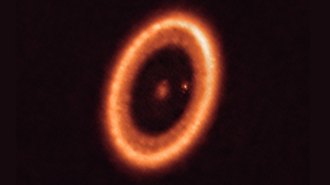 Astronomy
AstronomyThe tiny dot in this image may be the first look at exomoons in the making
New ALMA observations offer some of the strongest evidence yet that planets around other stars have moons.
-
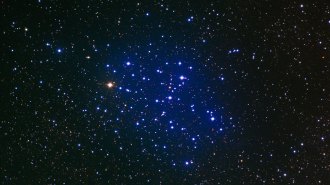 Space
SpaceHow do scientists calculate the age of a star?
There are a few different methods to determine the age of a star, but none are perfect.
By Lisa Grossman and Helen Thompson -
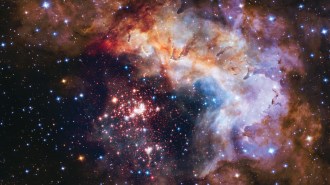 Planetary Science
Planetary ScienceA century of astronomy revealed Earth’s place in the universe
The past century of astronomy has been a series of revolutions, each one kicking Earth a bit farther to the margins.
-
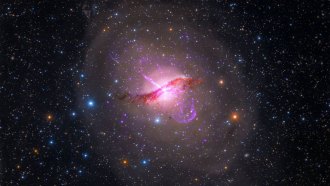 Astronomy
AstronomyThe latest picture of a black hole captures Centaurus A’s massive jets
Data from the Event Horizon Telescope reveal new details of jets spewing from the supermassive black hole at the center of the galaxy Centaurus A.
-
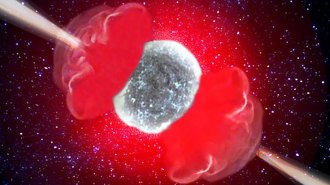 Space
SpaceSouped-up supernovas may produce much of the universe’s heavy elements
An old star that formed from an explosive event called a magnetorotational hypernova is revealing where elements like uranium and silver might be forged.
-
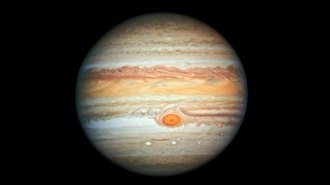 Astronomy
AstronomyA shadowy birthplace may explain Jupiter’s strange chemistry
Dust that blocked sunlight caused the giant planet to form in a deep freeze, a new study suggests.
By Ken Croswell -
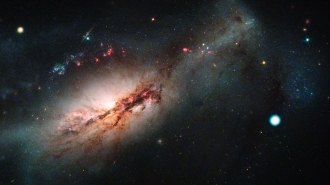 Astronomy
AstronomyScientists spotted an electron-capture supernova for the first time
A flare that appeared in the sky in 2018 was an electron-capture supernova, a blast that can occur in stars too small to go off the usual way.
-
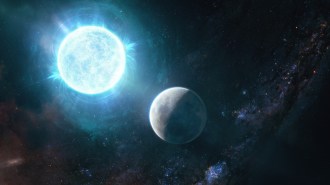 Astronomy
AstronomyThis moon-sized white dwarf is the smallest ever found
A newfound white dwarf is the smallest and perhaps the most massive known, and spins around once every seven minutes.
-
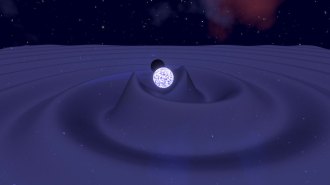 Physics
PhysicsGravitational waves reveal the first known mergers of a black hole and neutron star
For the first time, LIGO and Virgo have detected long-anticipated gravitational waves from a black hole merging with a neutron star.